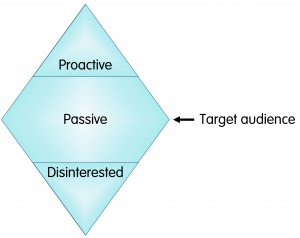Of course we need to know which foods are better for us in a simple way. For example, the Red Amber Green labelling on foods demonstrates the levels of fat, salt and sugar content, which is a step in the right direction. However, continued information overload just creates more noise and confusion in an already misunderstood market. It is far more helpful to modify our food environments to help make healthier choices the automatic choice for the Passive audience.
As the Passive majority start eating well and exercising more then we set a new social norm. We are heavily influenced by what those around us do and once the social norm reaches a tipping point, with the majority making better choice, even more people will follow. Rather than targeting the Disinterested directly, we are more likely to have success by targeting the Passives instead, and a small percentage of the Disinterested will join in once it becomes the norm.



Leave a Reply